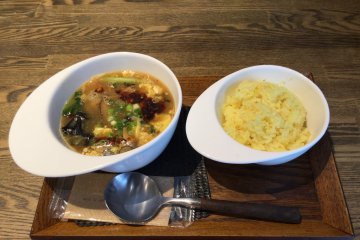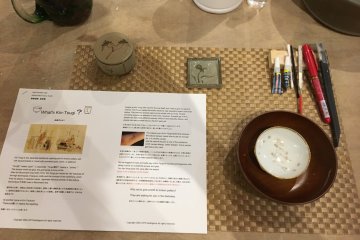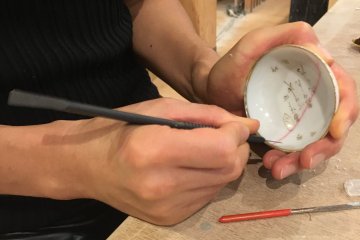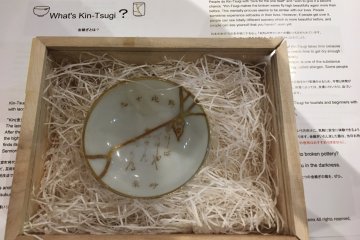Tokyo’s upmarket shopping district, Omotesando, is also home to another upmarket activity: kintsugi. Not far from the station, on a quiet side-street, the Saideigawa Pottery Studio offers experiences in the Japanese art of repairing broken pottery using lacquer dusted with powdered gold.
The studio's master, Taku Nakano, is a contemporary ceramics artist and traditional Japanese potter. He fuses tradition and modernity in his pieces, many of which are part of a stunning display he keeps inside the studio. Heading to the studio for a lesson, we discovered that Nakano is as passionate about the concept of kintsugi as he is about the art itself.

Before we started the 90-minute session, he explained that kintsugi is similar to wabi sabi, the Japanese aesthetic that beauty is imperfect. In kintsugi, the use of gold to make an object stronger and more beautiful is also designed to be symbolic, showing that people can overcome hardships and deserve a second chance. When the pottery is repaired with gold, he explains, the artist will also add to the design to make the piece reborn.

It turns out that there are seven steps in this process:
- Trace the broken edges of the plate with a red marker to make them easier to see.
- Click the plate back into place using sight, sound (give it a tap) and feel.
- Add tape to hold the plate together.
- Apply glue to the cracks and wipe off the excess. Let it dry and scrape off the residue with a scalpel and alcohol rub.
- Trace the cracks in red while adding your own design.
- Dip a brush in gold powder and tap it onto the cracks.
- After a few minutes, brush off the excess gold and clean the plate with a cloth.
The process, while simple and easy to follow, turns out to be quite interesting and challenging. Nakano and his staff are natural teachers who make the experience a lot of fun for novices like myself.

Though kintsugi is believed to have originated in the 14th century, it survives today as one of Japan’s rarest crafts and provides a fascinating insight into Japanese culture. The pottery studio is a great place not only to try the experience but also to see some of Nakano’s beautiful kintsugi works.
This #HOKURIKUxTOKYO trip was supported by the Tokyo Metropolitan Government, however, all views are my own.












